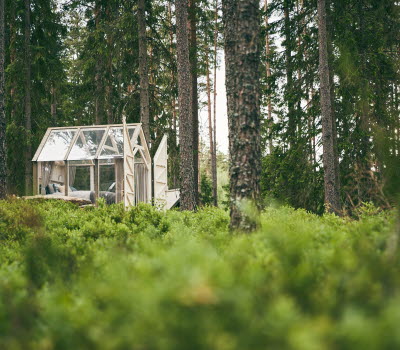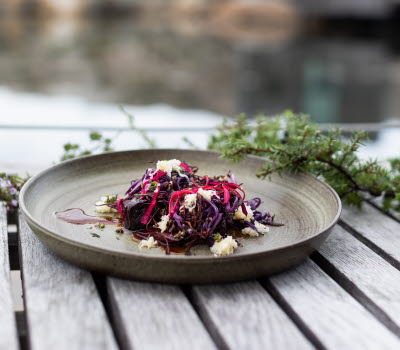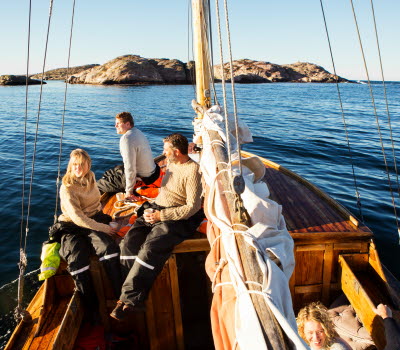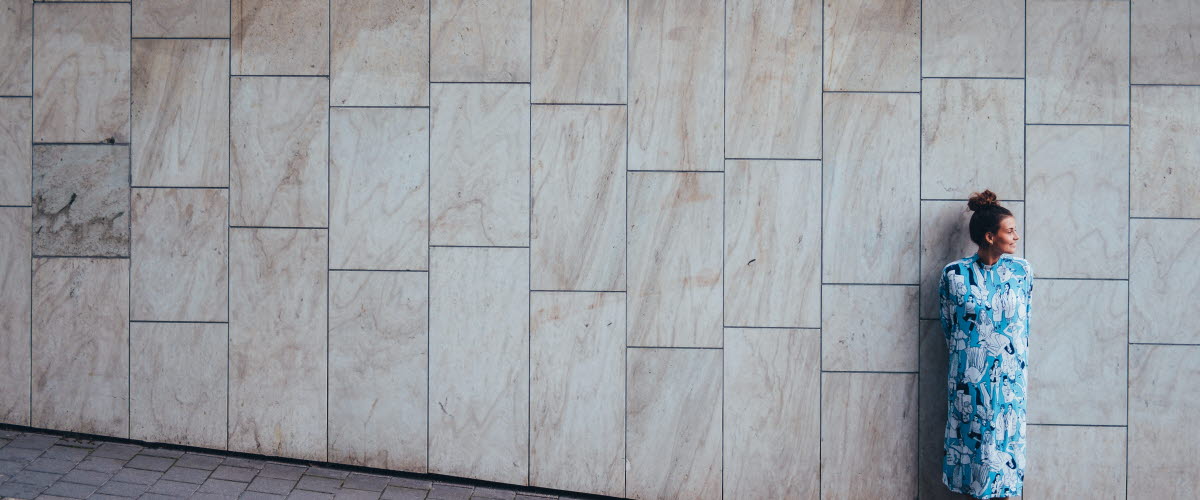Borås – world leader in innovative design and street art
In the town of Borås, creativity flows like never before. Streets and squares have been transformed into enormous outdoor galleries that inject art into the daily lives of the local residents. Swedish design is famous worldwide for its innovation and creativity, where function is often integrated into the design. And here, where textiles have been produced for centuries, the eternal question is whether there’s a limit to what we can create using textile materials.
When you step into the Textile Fashion Center in Borås you enter a vibrant creative world – a sort of cultural Narnia. Once upon a time these spaces were home to spinning and weaving mills, die works and sewing factories. And although the factory sounds faded out long ago, the pace hasn’t slowed. Here the future is taking form!
Here, in Europe’s foremost science park for textiles and fashion, you’re welcomed to an open industrial precinct with large windows that let the light flow in, while also giving a view of the Viskan River, which flows directly outside. From the in-house restaurant the Food Company you hear the happy buzz of dinner guests, while students from the Swedish School of Textiles socialize in the lounge groups in the adjacent lounge. You can’t help notice the colourful entrance to the Textile Museum of Sweden, as well as William Sweetlove’s sculpture “Cloned Frogs on Gala Dress”, a wedding present from the city of Borås to the Swedish Crown Princess Victoria and Prince Daniel in 2010.
Photographer: Faramarz - Textilmuseet i Borås
A region with textile DNA
As early as the 16th century, pedlars went from farm to farm in the area around Borås, selling fabrics and other craft products. With time these businesses expanded; there was a greater need of organization, and so the putting-out system developed. Most work was still done by hand, and it wasn’t until 1835 that Sweden’s first mechanized cotton-weaving mill opened outside Borås. At that time virtually the entire population of Borås worked in textiles and the mail-order business that emerged from it.
In the Borås region you’ll also find Sweden’s oldest linen weavers – the family business Ekelund. Since the late 17th century they have provided Swedish homes with sustainably manufactured towels, tablecloths and rugs. You have probably also walked on rugs made by Kasthall and Bolon, companies that export to hotels and offices worldwide. Bolon’s success came from seeing opportunities where no one else did. Since 1949 they have turned textile waste into rag rugs – a recipe that has led to considerable success.
The desire to find new solutions is still a huge motivator in the Borås region, and the Swedish School of Textiles trains tomorrow’s textile innovators and creators.
Photographer: ROBERT DAHLBERG
Smart Textiles – creating high-tech textiles for the future
Today’s textile industry is about much more than fabrics and clothes. For instance, did you know that there are clothes that measure your pulse or reduce the greenhouse effect, or knitted blood vessels that are used in heart bypasses? How about socks that analyze your running stride or fabrics that change colour?
In close collaboration with the Swedish School of Textiles and the business sector, Smart Textiles is turning textile traditions inside out, developing products for healthcare, architecture and interior design. They are the Nordic region’s largest research resource in the field of advanced textiles. In the project Design for recycling, a dress has been developed made solely from the timber industry; Swedish forestry materials have been processed to paper, which is then spun into thread, and then fashioned into a soft and flexible dress. Who knows, in a few years’ time we all might be walking around in clothes made of paper.
The town as a gallery
The creative Borås mentality can be felt everywhere in Borås, which you’ll discover as soon as you arrive. Over the past decade the town has been transformed into a gigantic outdoor art gallery, thanks to two art biennales, one for sculpture and one for street art, which rotate every second year. For the festival No Limit Street Art, which started in the autumn of 2014, internationally renowned street artists were invited to fill the town’s walls and squares with everything from small sculptures to huge murals – some so large that they cover entire walls of a seven-storey building.
Photographer: ROBERT DAHLBERG
The idea of the town as a gallery is also in focus during the Borås International Sculpture Biennial, which started in 2008. The sculptures on exhibit have become part of the town’s character. One of the most renowned is Jim Dine’s nine-metre tall bronze statue of Pinocchio, named Walking to Borås, which many people associate with the pedlars from Borås who walked around the countryside of Sweden, selling textiles. Another significant piece is Jaume Plensa’s House of Knowledge, located outside the entrance to the Textile Fashion Center. It symbolizes the learning and understanding of textile research.
The art museum that never should have been
If you head north from the Textile Fashion Center, toward Knalleland and Borås Zoo, you’ll arrive at Abecita Art Museum. It features international photography, European and American graphic art, and award-winning Nordic textile art. But the fact is, this unique collection was never intended to be exhibited. It all started when Berit and Bengt Swedmark, owners of Abecita AB, a leading Scandinavian producer of women’s swimwear and underwear, began to buy graphic art for their home, by artists who were relatively unknown at the time. With time the collection grew and the couple decided to share it with the world. So now the collection is housed in a three-storey building, featuring over 500 artworks by some 30 international artists, including Andy Warhol, Robert Rauschenberg, Roy Lichtenstein, Kiki Smith, Louise Bourgeois and Jim Dine.
The development of the town into a gallery full of art, sculpture and street art has made waves around the world. So it’s no surprise that the locals are proud of their creative, innovative town, where art is accessible in a unique way, and a part of everyone’s daily life.










